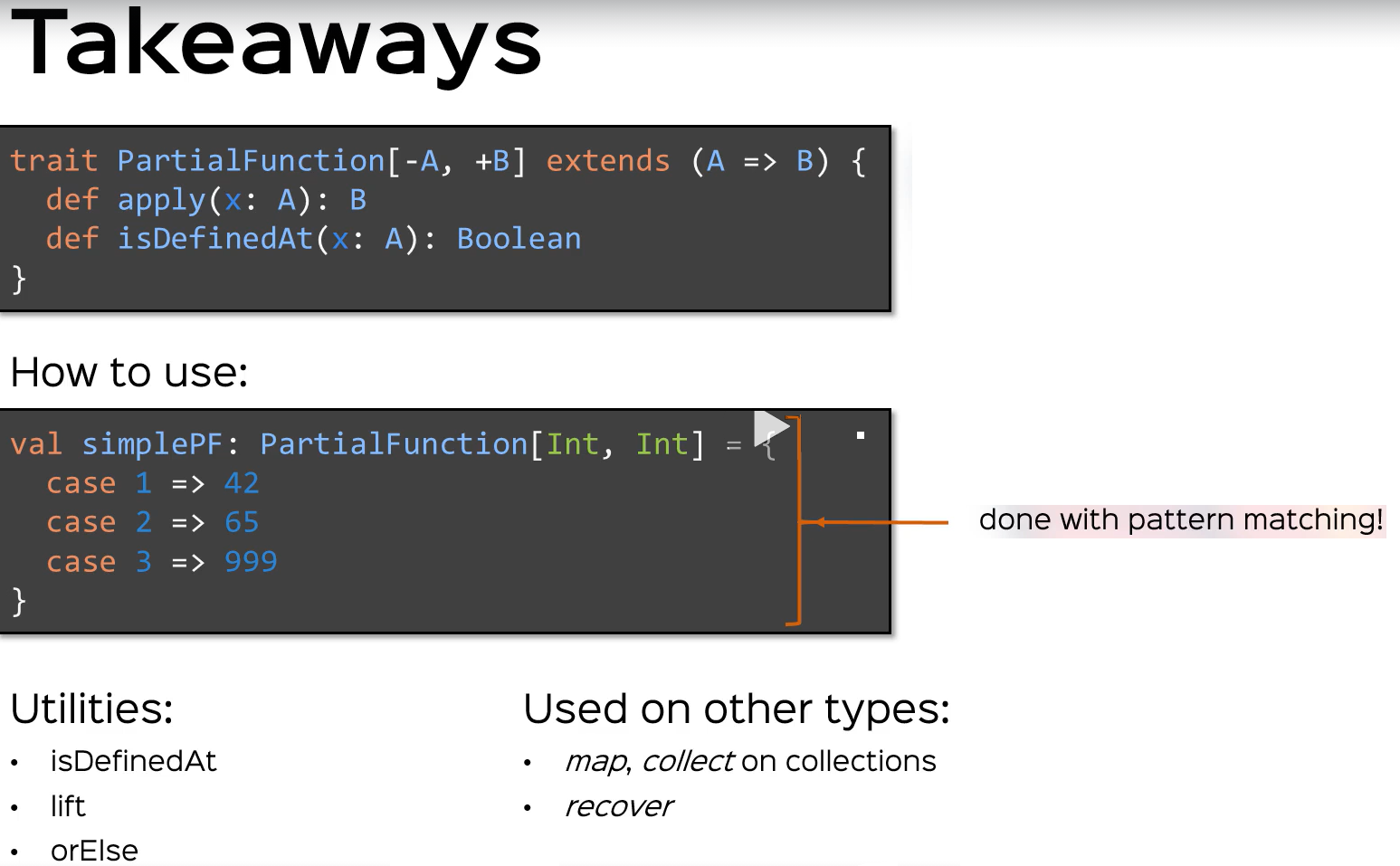ScalaSchool
Partial Functions
Functions like def double(x: Int) = x*2, are known as total functions, because they
properly support every possible value that meets the type of the input parameters. That
is to say double will successfully return a value for every integer value.
However, there are some functions that do not support every possible value that meets the input type requirement. For example, a function that returns the square root of the input number will not work if a negative value was passed in as a function argument. Likewise, a function that divides by a given number isn’t applicable if that number is zero. Such functions are called partial functions because they can only partially apply to their input domain.
Scala’s partial functions are function literals that apply a series of case patterns to their input, requiring that the input match at least one of the given patterns. Invoking one of these partial functions with data that does not meet at least one case pattern results in a Match exception.
Note On Partial Functions vs Partially Applied Functions
The two terms look and sound almost the same, causing many developers to mix them up. A partial function, as opposed to a total function only accepts a partial amount of all the possible input values. A partially applied function is a regular function that has been partially invoked, (i.e. invoked with less than the total number of parameters) and remains a function that can be fully invoked in later.
Creating Partial Functions
A set of case clauses enclosed by braces is the syntax for writing a partial function.
val f: PartialFunction[Char, Int] = {
case '+' => 1
case '-' => -1
}
f('-') // calls f.apply('-') and returns -1
f.isDefinedAt('0') // returns false
f('0') // Throws a Match Error
f is an instance of the class PartialFunction[A,B] (Where A is the input type and B
return type)
The PartialFunction class has two methods: apply, which computes the function value from
the matching pattern, and isDefinedAt which return true if the input matches at least one
of the patterns.
PartialFunction[A,B] is a subtype of Function1[A,B] so partial functions can be used where
ever regular functions are accepted.
There are some methods specially designed to be used with PartialFunctionsas a parameter. For
example, the collect method of the GenTraversable trait applies a partial function to all
the elements where it is defined, and returns a sequence of the results.
"-3+4".collect {
case '+' => 1
case '-' => -1
}
// returns Vector(-1, 1)
Note on Seq and Map
A Seq[A] is also a PartialFunction[Int, A] and a Map[K,V] is a PartialFunction[K,V]. So
for example you can pass Maps and Seqs into the collect method. (Since collect takes a PF)
val names = Array("Alice", "Bob", "Sally")
val scores = Map("Alice" -> 10, "Carmen" -> 7)
names.collect(scores) // Yields Array(10, 7)
List(2,1,0).collect(names) // Yields List("Sally", "Bob", "Alice")
Lift and Unlift
The lift method turns a PartialFunction[T,R] into a regular function from T => Option[R]
val f: PartialFunction[String, Int] = {
case "one" => 1
case "two" => 2
case "three" => 3
}
val g: f.lift // A Function1[String, Option[Int]]
g("one") // returns Some(1)
g("four") // returns None
Conversely, you can turn a function returning Option[R] into a partial function by calling
Function.unlift
